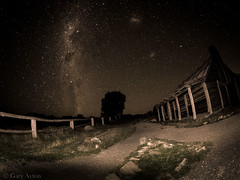My first Canon dSLR was the much hyped Canon 1D Mark III when it came out in mid 2007.
I bought this to compliment my much lighter, more compact Olympus Four Thirds system as it would add improved sports AF, 10fps burst rate, shallower depth of field and less noise at high ISO, plus the ability to use lovely fast prime lenses such as the 135mm f/2.0L lens and also tilt shift lenses.
Unfortunately, the Canon 1D Mark III, despite being Canon’s flagship sports camera from a company priding itself on sports photography (that’s why you used to see all those white lenses at sports events), was plagued with unreliable autofocus necessitating return to Canon for modification as well as firmware upgrades but still, my Panasonic GH-1 will AF in C-AF tracking mode MUCH more reliably on a stationary subject as you walk towards it at 3.4 fps than my Canon 1D MIII will do at 3fps in AIServo mode.
Many Canon pro-shooters in frustration turned to the Nikon D3s which had a much more reliable sports AF.
Late last year, Canon proudly announced a new sports pro body, the Canon 1D Mark IV, with a totally revamped AF system and added in movie mode.
Sadly, this report by Rob Galbraith seems to suggest the new model’s AF is still extremely unreliable for sports, and the Nikon D3S is still a more reliable camera in AF for action, is less noisy at high ISO, and being full frame, allows wider angle shots, while the 1D MIV gives more telephoto reach – see here.
Canon is due to release a Mark IV of its full frame, 20+mp pro dSLR, the 1Ds Mark III, but if they just use the current AF system as in the 1D Mark IV, they may find the pros will be moving to the Nikon D3X or a Leica S3.
Perhaps Canon has lost its way – it’s once dominant position in the sports autofocus world has been lost, and even its low noise at high ISO dominance of its Canon sensors appears to be falling behind even lowly Panasonic if DxO’s comparisons of the Panasonic GH-1 and Canon 7D are to be believed.
Without these two reasons to buy Canon, Canon may soon be losing its dominant market share in the dSLR world to Nikon for proshooters and to the much lighter, smaller Micro Four Thirds for most of the rest of photographic needs.
This is very sad, not only for me as I have a LOT of money invested in pro level prime Canon lenses (luckily I can put them on my Micro Four Thirds cameras too), but it may have a big impact on Canon’s pro status as unfortunately, the market tends not to forgive 2 dodgy products in a row.
However, shooting sports with shallow depth of field is a difficult task and each sport requires a different approach and often different AF settings – this is why a pro camera is so complicated for the casual user to use well.
The Canon AIServo AF algorithm tries to predict the AF for the next shot after analysing the subject’s velocity in the previous AF attempts. It is thus not surprising that the AF will fail at the end of a race when the subject suddenly slows down, but it seems with this camera, it takes a LONG time for the AF system to adjust to this and by this time, you have lost the “decisive moment” of capturing the instantaneous expression of a winning or losing competitor which is critical for photojournalists.
I for one will not be upgrading my Canon 1D Mark III just yet – 10 megapixels is just fine for me, and luckily, I don’t shoot much sports.
It may well be the last Canon I will have as the Micro Four Thirds system is far more functional for my needs and will only get much better as technology evolves while Canon is stuck on the constraints of old optical viewfinder technology and being big and heavy, I already find myself increasingly leaving it at home.
Perhaps when Panasonic produce the silent digital shutter camera (eg. the rumoured GH-2 later this year), it will evolve to take 10-60fps (if they get the buffer large enough), and its contrast detect AF tracking mode which currently is able to identify a subject so you don’t have to worry about where your AF point on your subject will shoot sports more reliably than a phase detection AF system as used in dSLRs.
The current Panasonic GH-1 will easily track someone walking, or a car passing at 20-30kph, even if you zoom in or out – this will only get better as electronics improve. Unfortunately, currently it will not lock onto a subject that is only a small component of the frame.
Of course you will get EVF blackout, but this can be easily resolved by adding a cheap optical viewfinder to the hotshoe which is a little wider view than your lens and you will be able to track your subject very nicely indeed.
The future, whether you like it or not, will be an electronic solution where the camera can identify a subject and preferentially lock onto it, no matter where it is in the frame.










